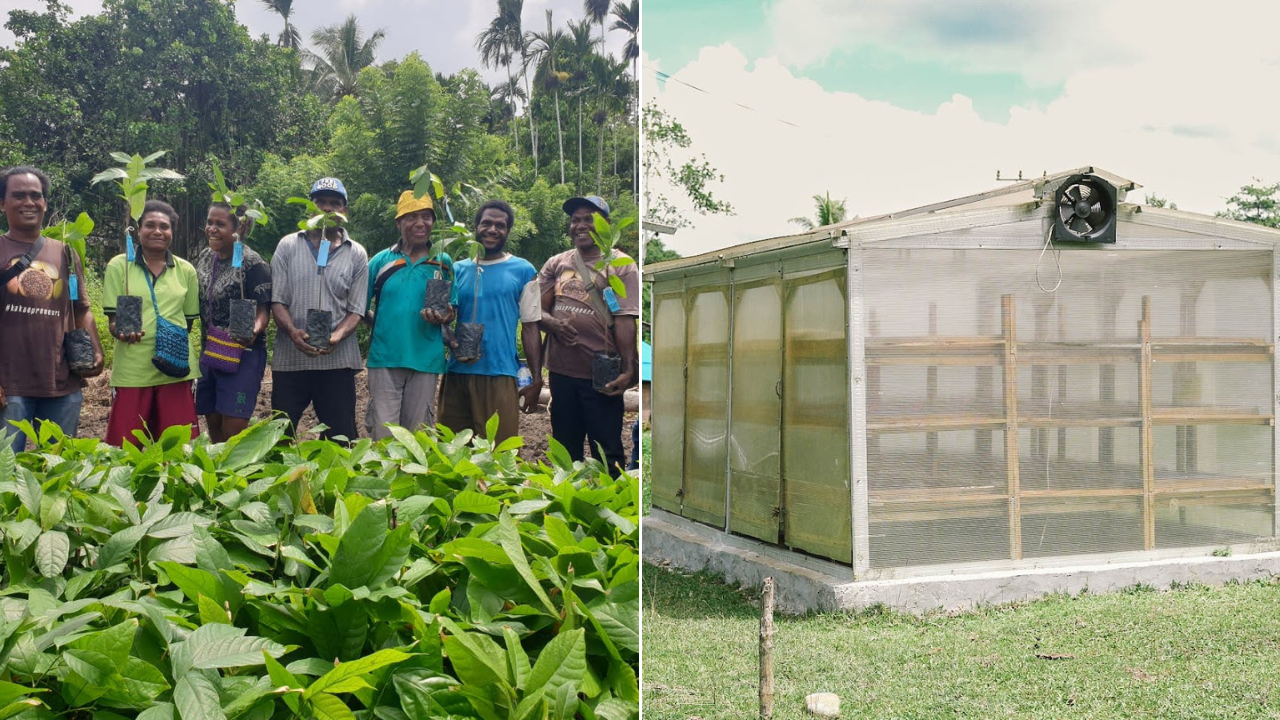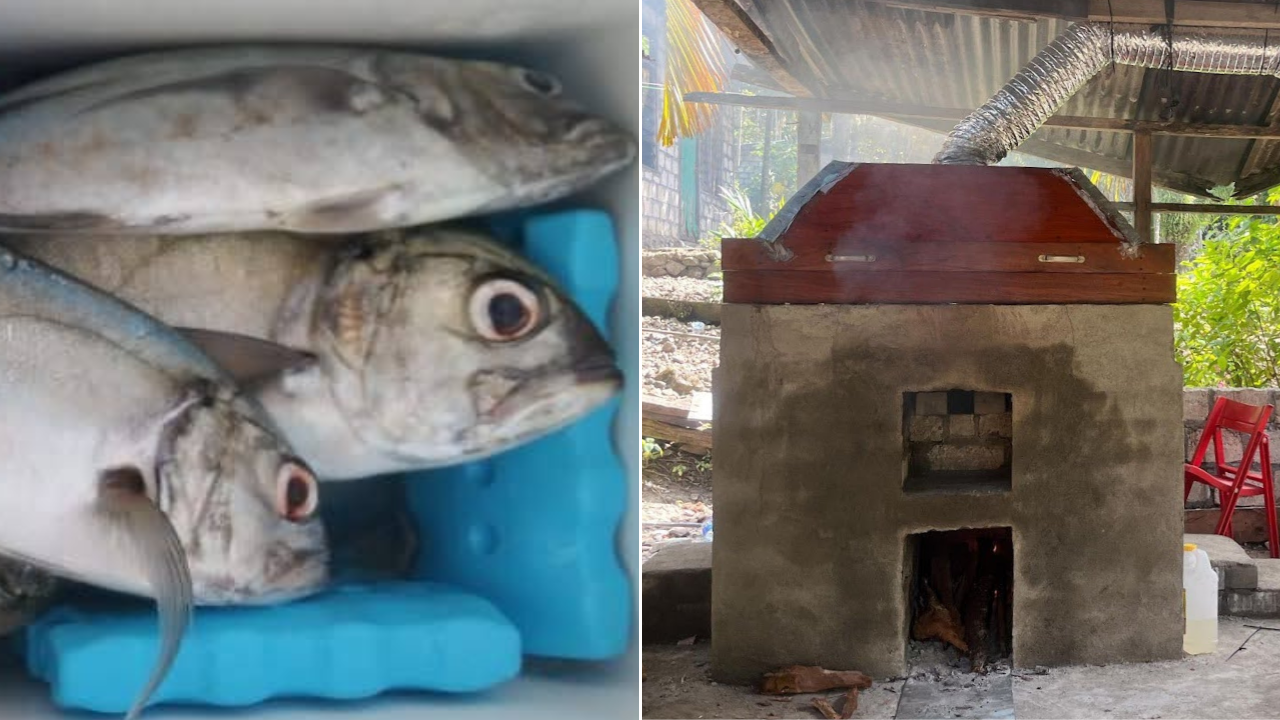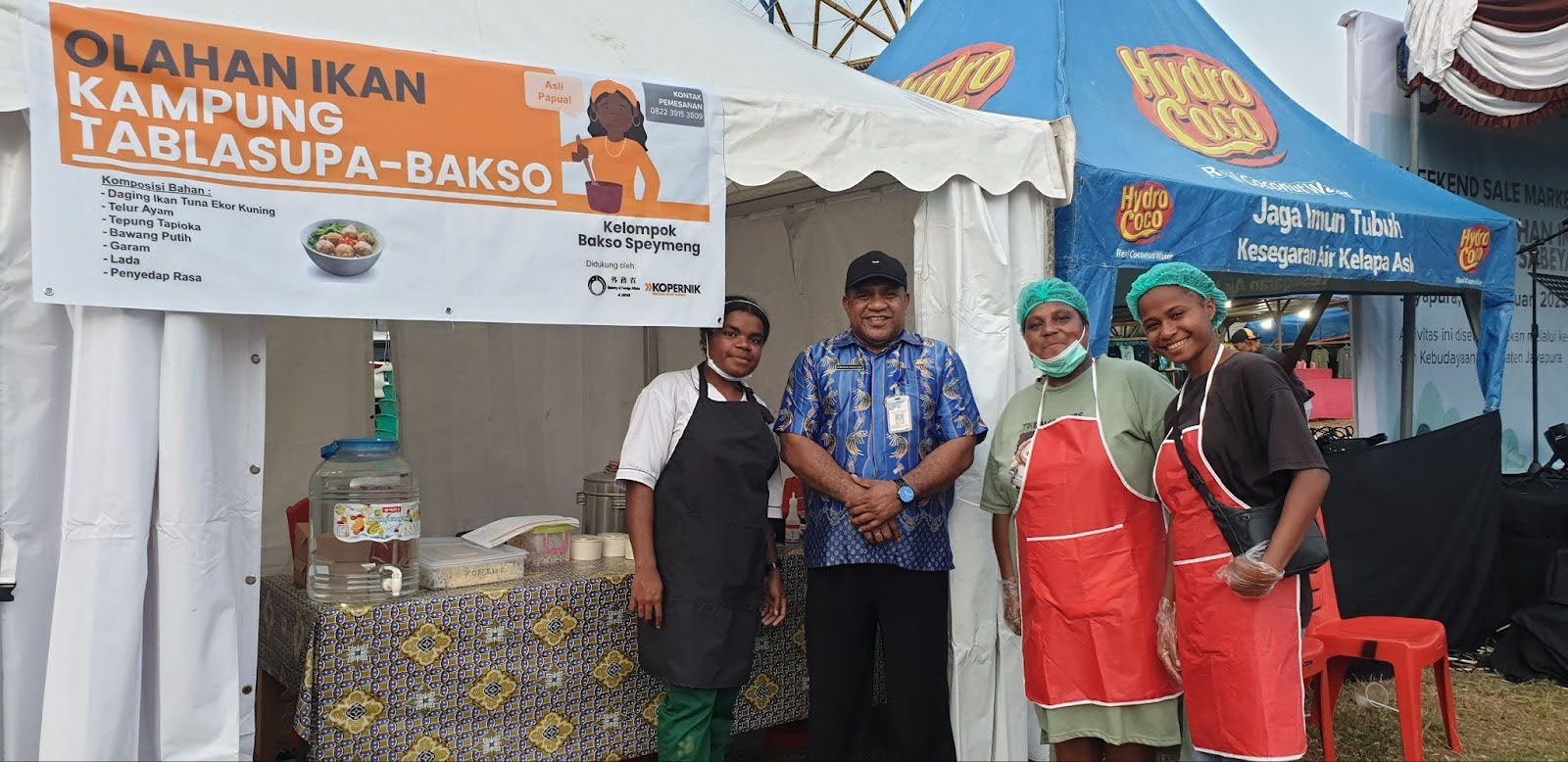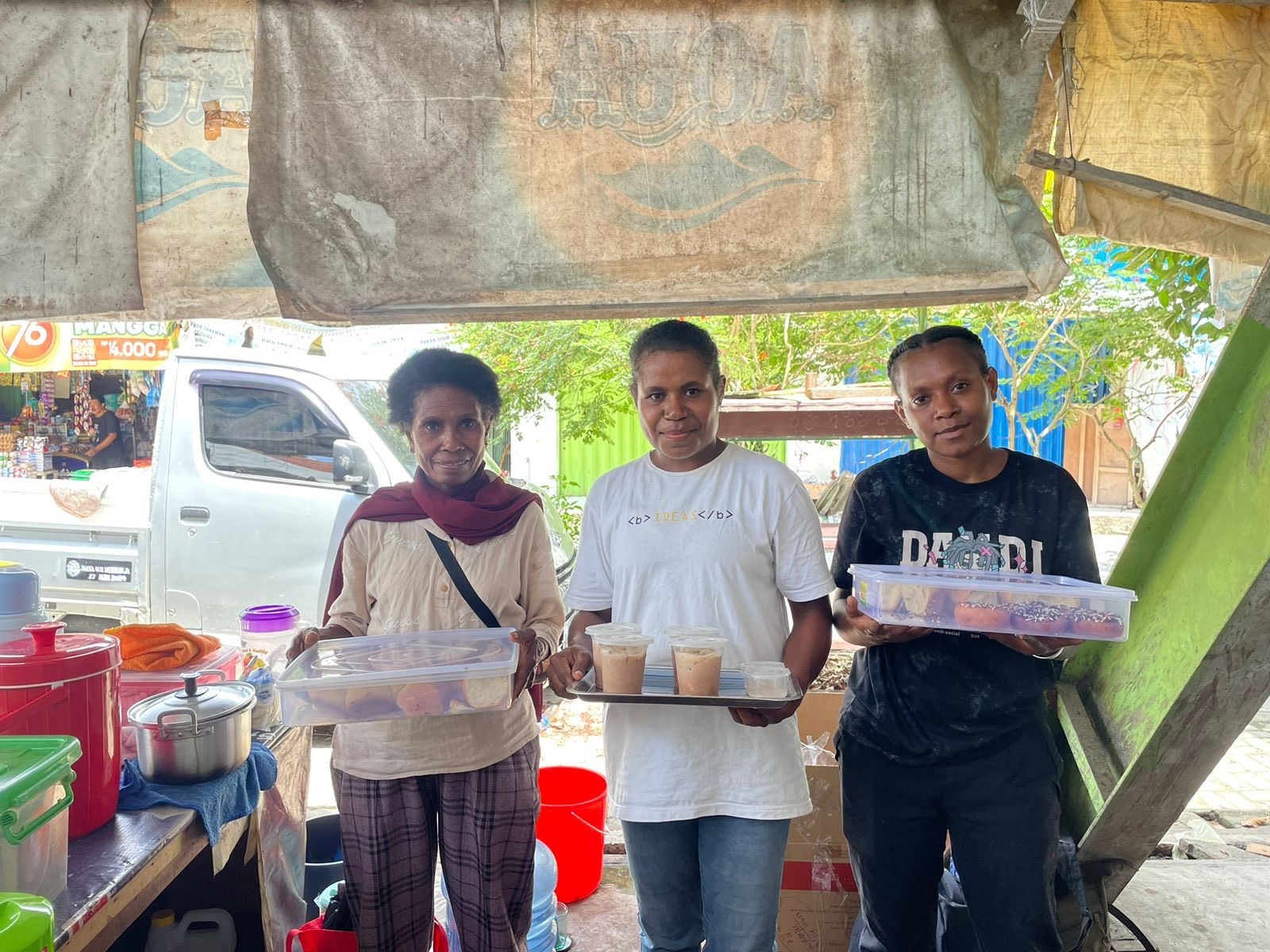Papua, the easternmost island of Indonesia, is rich with natural resources, boasting fertile land and bountiful seas. Approximately 60 kilometers from the heart of Jayapura Regency lies Sabeyab village in Kemtuk District, known for its cacao production. Despite its potential, Sabeyab’s cacao plantations have long faced challenges such as aging trees, pests, and diseases, resulting in low yields and reduced productivity. Further north along the coast in Depapre District, the fishing communities of Kendate and Tablasupaface face a different set of challenges, notably limited access to preservation methods that could improve the value of their catches. Across these three villages a common thread emerges; limited market access and limited knowledge and opportunities to create value-added products.
Since 2022, with support from Japan’s Ministry of Foreign Affairs (MOFA), Kopernik has partnered closely with these communities, introducing appropriate technologies to improve the quality of cacao and fish, sharing knowledge on derivative product development and boosting market opportunities.
This year marks the conclusion of a transformative three-year journey characterized by learning, collaboration, and community-driven growth.

Left: Distribution of 3,300 cacao seedlings to farmers in Sabeyab, February 2024. Right: A solar dryer as an alternative method to improve the cacao drying process in Sabeyab.
Sabeyab: Empowering the Cacao Community
To support cacao farmers in Sabeyab village, Kopernik provided essential agricultural tools, including cutting machines, drilling machines, chainsaws, wheelbarrows, and machetes for communal use. Additionally, the village received fermentation boxes and solar dryers, significantly improving the efficiency of cacao drying, reducing drying time by two days and effort by 40.4% compared to the traditional floor drying method.
Martinus, a Sabeyab cacao farmer, remarked "I feel safer using the solar dryer compared to the tarpaulin. Whether it rains or is hot, the harvest remains protected inside the solar dryer. In 3 days, the cacao beans are dry."
Beyond improved drying methods, farmers planted 3,300 cacao seedlings in February 2024, achieving a promising first year survival rate of 63.1%, notably higher than the typical 50%. With ongoing care and enhanced post-harvest processes, farmers in Sabeyab are projected to increase their income by 16-40% by the time of their first harvest in November 2025, driven by the shift from selling wet beans to higher-value fermented dry beans.
Women farmers in Sabeyab village actively participated in training to produce cacao derivatives such as chocolate drinks, spreads and candies. This diversification significantly enhanced their market opportunities. Fermenting cacao alone increases its value by 120%. Processing it into bottled chocolate drinks boosts value by up to 327%.
"I am proud that I can now make chocolate products” said Yomida Yaru, leader of the Sabeyab’s chocolate production group. Through the Kopernik program, I learned how to identify, select and ferment high quality cacao beans. I hope this knowledge will continue to benefit our community”.

(Left) Reusable ice packs used to improve fish preservation before sale. (Right) The modified Ahotor oven, an alternative fish smoking method introduced in Kendate.
Kendate and Tablasupa: Enhancing Coastal Livelihoods
In the coastal communities of Kendate and Tablasupa, Kopernik introduced deep freezers, reusable ice packs, and durable cool boxes to improve fish preservation during fishing trips and prior to market sales.
Replacing ice blocks with reusable ice packs reduces preservation costs significantly, saving fishers IDR 6,000 to IDR 8,000 per trip, with additional savings during the production, processing and sales cycle.
To create additional economic opportunities, Kopernik facilitated training programs for developing fish-based products. In Kendate, Kopernik built a modified Ahotor oven in collaboration with Fablab Kanda Nishikicho, Japan. This oven, featuring an oil tray and chamber, reduced air pollution by 46.2% compared to traditional open smoking methods. It also reduced wood usage by 38.9%. The resulting smoked fish products have been well received in local markets.
Women in Kendate and Tablasupa learned to produce and market value-added products such as fish balls, nuggets, sausages, and smoked fish, leading to increased visibility and opportunities at local schools, markets and festivals. Ten groups now sell their products in these locations thanks to their entrepreneurial spirit, which has boosted their confidence and financial independence.

Tablauspa community group selling their fishballs during weekend sale.

Sabeyab community group selling their chocolate drinks and spreads at Sentani Market.
Sustaining the Impact
Simple, yet effective technologies and product diversification have improved efficiency, reduced costs and facilitated personal and community growth. Enhanced communication skills and increased access to external support from local authorities have further solidified these gains.
The impact has been especially transformative for women. Their involvement in processing and selling derivative products has fostered greater confidence, sharpened their skills, and nurtured a stronger entrepreneurial mindset. These initiatives have elevated their productivity and financial independence, while also encouraging deeper collaboration within women’s production groups. Most importantly, they have also helped improve collaboration among women, connecting them with fellow entrepreneurs and opening up access to local and regional markets.
"The training provided by Kopernik helped me to make nuggets that can be sold in the market, at schools, and to people in my village. I want to develop this into a business that continues long after the Kopernik program has ended. My hope is that Kendate nuggets will be known not only in Kendate but also throughout Papua," said Martha Yopo, leader of the Kendate community group.
The program has brought positive impact to the community, strengthening local fishing and farming practices, while also supporting the development of value-added products. Despite ongoing challenges, the communities have built a resilient foundation for continued growth and sustainability. The lessons learned over these three years provide valuable insights for developing even more effective, community-driven solutions in the future.
Read the full report to explore our findings and recommendations.


